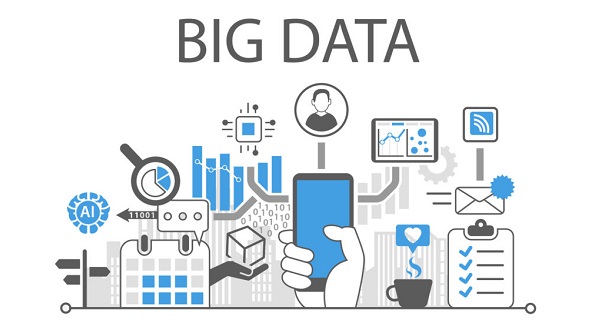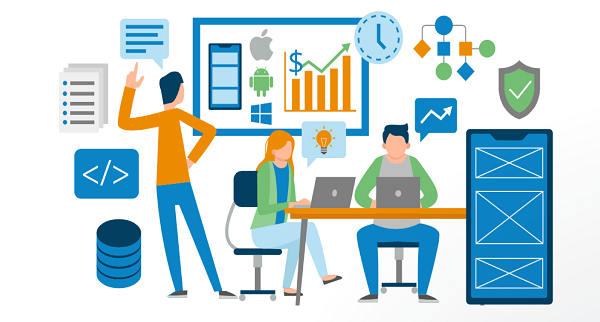Big Data: Transformation of Retail Industry
“It is a capital mistake to theorize before one has data. Insensibly one begins to twist facts to suit theories, instead of theories to suit facts.” These were the words that Sir Arthur Conan Doyle used back in 1887. when writing the first Sherlock Holmes book. The importance of having the right information before making any decision remained as great as it was back then. Moreover, we wouldn’t be wrong when saying that in today’s digital world, Big data is everything. We all have a digital footprint, and as unimaginable as it might seem, everything we do online can be analyzed and converted into quantitative and qualitative data. By doing this, companies are able to have an insight into customer’s behaviors which they can later use when planning the right business strategy. What Big data actually consists of, how it is collected and how it is used in the digital world are the questions that we’ll try to address in the lines below.
Big data is a term used to describe a large amount of data that has the purpose of discovering patterns and associations mainly related to human behavior. There are three aspects of Big data that are considered most important: variety, volume, and velocity. Having the right data is important in every business, but because of nature and the widespread of eCommerce, this became the field where Big data is mostly used. Here, Big data provides a greater understanding of the customer’s behaviors in terms of shopping habits. By knowing that, companies have an insight into how smoothly the customers’ shopping journey is going, are there any problems, and in the end, how to use that information in order to attract new customers. Having these analytics, companies are enabled to offer customers a more personalized shopping experience and also become more aware of future shopping trends while making strategic decisions for the future. A survey done by Alteryx and RetailWire of nearly 350 retailers and brand manufacturers found that 81% of respondents say they gather shopper insights. But, this survey also reveals another important fact – many companies collect big data but don’t know how to use it properly. Only 16% consider themselves experts when it comes to data collecting, and 24% of them as “newbies”.
Besides using Big data for offering customers a more personalized and engaging experience, this can also be a very powerful tool in other situations:
- Predicting Spendings
Even though you can use IP addresses, credit card transactions, etc. for obtaining customer information, one of the best ways to collect this data is by using loyalty programs. This way you can follow the flow of shopping and spendings that customers are commonly making and by that predict also their future spendings and product recommendations.
- Customer Journey
Having an insight into the journey that your customer goes through enables companies to provide an even better customer experience. By collecting this kind of data, you’ll know if there are any problems while for example, scrolling through the website, finding the wanted products, making an order, paying, etc. You’ll see if everything is going smoothly, or there are problems in any of these steps along the way. Analytics will show you how much time people spend on your website, and on which pages, how many of them proceed whit making the order and completing the process to the very end. This way you can detect problems – which are the pages that most customers are abandoning, and then come to the answer to the most important question – why?
- Personalizing Customer Experience
As already being said, big data offers retailers lots of opportunities in terms of personalizing the customer experience. It can be used for offering recommendations to your customers for their future buying and knowing whit which aspect of the customer journey are they satisfied and of which they are not. A very useful source of information for reaching this aim could be social media. You should be aware of what your customers are saying on social media, what are they following, sharing, commenting, not only about your company but also about the competitor ones.
- Forecasting Trends
Some algorithms analyze social media and web browsing in order to try to predict new trends in the retail industry. When we say “forecasting” what probably comes first to your mind is the weather. Some companies, like Pantene, also thought that way. Having in mind that their consumers are mostly women, they understood the importance of the connection between hair and weather conditions. Therefore, in the countries where the humidity is high, there is an opportunity for offering anti-frizz products so they made ads and in-store promotions in order to drive more sales.
By analyzing just one metrics means that you are missing the big picture. To get the most out of the data that you are collecting, you must be able not only to collect them but far more important, to understand them right. For that purpose, it is important to mix different metrics. There are a few of them that you can use. For example, there are a lot of reports that could be useful, like sales reports. There you can see how your sales are going, which products are the most wanted, are there any products that are running out of stock, etc. Another useful tool is traffic analytics. By using it, you can provide data such as how much traffic are you getting, and on which parts of the store. Then, when doing remarketing, be sure that you are tracking email openings, clicks, and time of engagement. Another thing is that you should combine data with human insights. That means that data will make no use if there aren’t people capable of understanding it in the right way.
Having data about your customers can be very useful but at the same time, it requires great responsibility. Getting a customer to trust you is one of the hardest things to achieve, but also, one of the easiest to permanently lose if you are not careful. Customers can be easily pushed away when they know how much information about them is gathered by the company, so you must persuade them that everything is transparent and well used. Therefore, access to customer’s information (especially to the personal one) should be done in the least intrusive way as possible. The techniques used here became so sophisticated that they are able to gain information about your credit cards when making the payments, browsing history, etc. In order to keep data safe, retailers should proceed with protocols that are unable to be bleached and that way increase the security.
Retailers who want to thrive in the competitors’ game in the future can not wait any longer with starting to use Big data. This will definitely take some time and effort, but once you have achieved it, the insights that you’ll gain will make it worth it. Because having so much data at the same time can be very confusing, there are some software solutions, such as Price2Spy, that could help you by providing different types of data in reports which you’ll find understandable. Also, you need to be aware of possible week points such as security and to continuously work on them.





